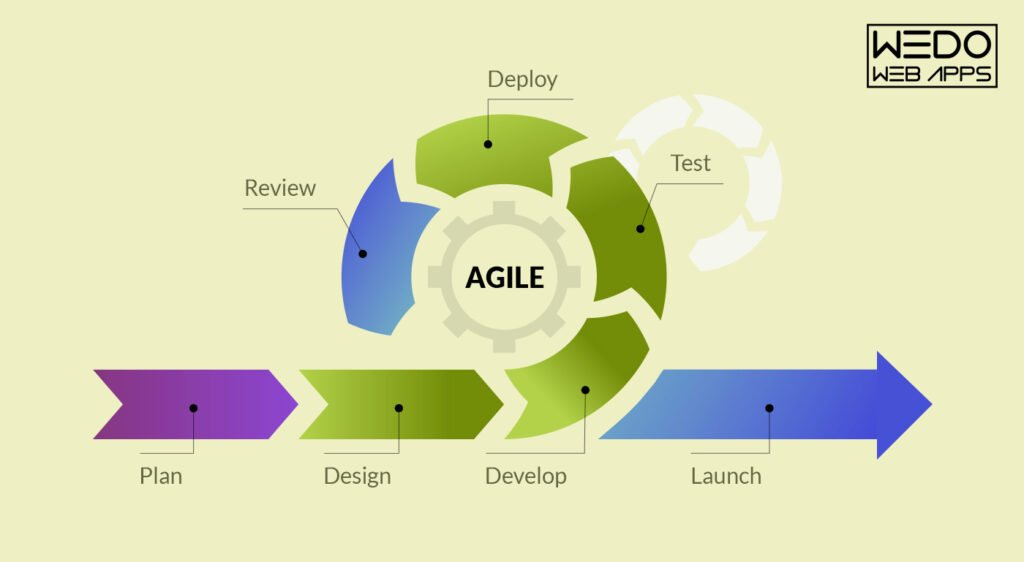1 Mar, 2024 | Quality Assurance Services
Technical Agile Testing Methodology - Life Cycle, Benefits, and Best Practices

Introduction to Agile Testing Methodology
In fast software development, Agile Testing is an example of efficiency and adaptability. Agile Testing is not like traditional testing. It is woven into Agile development. It fosters seamless collaboration between developers and testers. This approach improves the final product. It also ensures it fits the customer's changing needs.The Agile Testing Life Cycle
Pre-Sprint Activities
Before the sprint, Agile testing involves planning. We prepare test cases based on user stories. This phase is crucial for setting the stage for a successful sprint.Sprint Activities
During the sprint, testing occurs in parallel with development. Testers and developers work together. They ensure quick identification and resolution of issues.Post-Sprint Activities
After the sprint, the focus shifts to retesting. We will also explore any issues left unresolved. This ensures that the software remains robust and reliable.The Agile Software Testing Life Cycle
Understanding the Agile Software Testing Life Cycle is pivotal for any software development team striving for excellence. This cycle, often referred to as the Test Life Cycle in Agile, is not a standalone phase but rather a series of activities that align with the Agile methodology's iterative nature. Let's break down these activities to gain a full understanding of the process.Pre-Sprint Testing Activities
Before the sprint commences, the testing life cycle in Agile methodology starts with a preparatory phase. Here, test plans are created based on user stories, ensuring that the team has a clear understanding of the requirements and the testing scope for the upcoming sprint.Sprint Testing Activities
Once the sprint begins, the core of the software testing life cycle Agile teams follow kicks into high gear. During this phase, testing and development proceed hand in hand in a continuous and collaborative manner. Daily stand-ups and frequent communication ensure that the sprint's objectives are met with quality and efficiency.Continuous Integration and Testing
A cornerstone of the Agile Software Testing Life Cycle is the practice of continuous integration, where code changes are automatically tested as they are integrated into the repository. This approach minimizes the integration issues that can occur and underscores the testing life cycle in Agile as an ongoing, dynamic process.Release and Regression Testing
At the end of the sprint, the focus shifts to regression testing—ensuring new changes haven't adversely affected existing functionality. The test life cycle in Agile emphasizes that regression testing is crucial for maintaining product integrity before release.Post-Sprint Review and Retrospective Testing
Following the sprint, Agile teams engage in retrospectives to reflect on the testing processes used. They discuss what went well and what could be improved, demonstrating that the testing life cycle in Agile methodology is not just about executing tests but also about continual learning and process enhancement. By adhering to these stages of the Agile Software Testing Life Cycle, teams can ensure a robust, responsive, and efficient approach to testing that complements the Agile framework's fast-paced and customer-centric nature.Core Principles of Agile Testing
Continuous Feedback: Agile Testing thrives on feedback. It's the lifeline that ensures the product is moving in the right direction. It meets both the team's and customers' expectations. In Agile Testing, barriers between developers and testers dissolve. This fosters a culture of unity and shared responsibility. Adaptability: The ability to adapt to changes is at the heart of Agile Testing. This flexibility allows teams to pivot . They do so in response to customer feedback or project shifts.Benefits of Agile Testing Methodology
Enhanced Quality
Agile Testing integrated testing throughout the development cycle. It ensures a higher quality product. We find and fix issues early.Faster Time to Market
Agile Testing speeds up development. It allows faster releases and quicker responses to market demands.Increased Stakeholder Engagement
Agile Testing encourages stakeholder involvement. It ensures the product meets their needs.
Best Practices in Agile Testing
Implementing Test Automation
Automation is key to Agile Testing. It frees up time for complex, exploratory testing.Fostering a Collaborative Team Environment
Creating a culture is vital. In this culture, every team member feels responsible for product quality. This is essential for Agile Testing success.Emphasizing Continuous Improvement
Agile Testing is not about finding bugs. It's about always seeking ways to improve processes, tools, and team dynamics.Agile Testing Strategies
Using strategies like TDD, BDD, and ATDD ensures that testing is part of development. They boost quality and efficiency.Tools and Technologies for Agile Testing
The right tools can improve Agile Testing. Automation tools streamline testing. Collaboration tools enhance team communication.Challenges in Agile Testing
Agile Testing has benefits. But, it also presents challenges. These include managing changing requirements and ensuring test coverage. Understanding and addressing these challenges is key to successful Agile Testing.Case Studies: Agile Testing in Action
Real-world examples of Agile Testing show it works. It delivers high-quality software products and offers valuable lessons and insights.The Future of Agile Testing
The software development landscape keeps changing. Agile Testing will adapt and work with new trends like DevOps. It will play a key role in the future of software development.Conclusion
Agile Testing Methodology is more than a testing approach. It's a mindset that stresses flexibility, collaboration, and customer satisfaction. By embracing its principles and adopting best practices, teams can overcome its challenges. They can achieve higher quality, faster deliveries, and greater stakeholder satisfaction. The testing team is instrumental in realizing these benefits, embodying the principles of Agile Testing in their day-to-day work.Frequently Asked Questions
Agile Testing Methodology is an approach to software testing. It follows the principles of agile software development. It emphasizes continuous testing, flexibility, and close collaboration between developers, testers, and customers. Traditional testing methods are different. Agile Testing integrates testing into the development process. This allows for instant feedback and adjustments.
The Agile Testing Life Cycle is iterative. It fits with agile development. It features continuous testing. It includes pre-sprint planning, testing during sprints alongside development, and post-sprint reviews. This contrasts with traditional testing cycles. They often happen after the development phase. This leads to longer feedback loops. It may cause delays in finding and fixing defects.
The core principles of Agile Testing include continuous feedback, team collaboration, and adaptability. These principles ensure that testing is part of development. They foster a culture of quality and responsiveness to change.
Agile Testing has several benefits. It improves product quality. It speeds time to market. It increases stakeholder engagement. By adding testing to development, teams can find and fix issues faster. This ensures a better product and quicker delivery. Agile Testing also has stakeholders involved. This ensures the final product meets their needs and expectations.
Yes, test automation is a key component of Agile Testing. Automating repetitive tests frees up testers. They can then focus on more complex and exploratory testing. Automation tools can also help manage testing. They track defects and aid in continuous integration and delivery.
Teams can overcome challenges in Agile Testing. They need to encourage open talk. They need to welcome change. They need to keep improving their ways and tools. Effective planning and ongoing training can help. Picking the right automation and collaboration tools can also help. They can address common challenges. These include managing changing requirements and ensuring enough test coverage.
Emerging trends shape Agile Testing. They include adding artificial intelligence and machine learning to improve test automation. They also include the rising importance of security testing in Agile. They also include the closer linking of testing with DevOps practices. These trends reflect the ongoing evolution of software development and testing. They are moving toward more efficient, collaborative, and adaptive approaches.
Stakeholder engagement is crucial in Agile Testing. Stakeholders are participating. They include customers, business analysts, and product owners. This involvement ensures that product development matches their needs and expectations. It also allows for quick feedback. This is essential for making fast adjustments and ensuring the product's success.

